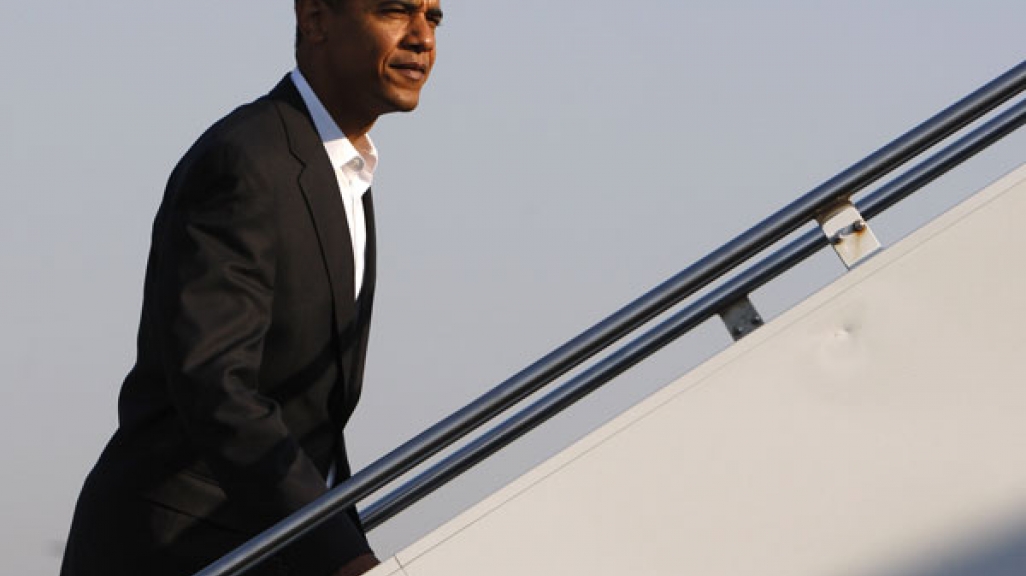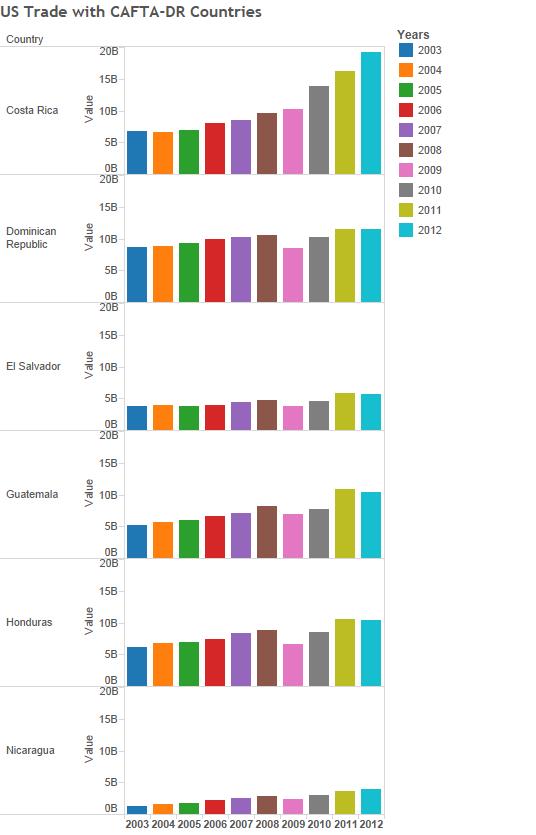Guide: President Barack Obama in Mexico and Costa Rica
Guide: President Barack Obama in Mexico and Costa Rica
Updated May 6—U.S. President Barack Obama traveled to Mexico and Costa Rica from May 2 through 4. He met with Mexican President Enrique Peña Nieto first. In Costa Rica, he attended a heads-of-state summit of the Central American Integration System (SICA), since the United States became an observer last year. Costa Rica’s Laura Chinchilla, the Dominican Republic’s Danilo Medina, El Salvador’s Mauricio Funes, Guatemala’s Otto Pérez Molina, Nicaragua’s Daniel Ortega, and Panama’s Ricardo Martinelli attended.
AS/COA Online provides resources and analysis on the president’s May 2-4 trip to Latin America. See Obama's agenda.
Resources: Obama's Visit to Mexico
AS/COA Online provides primary sources on four key U.S.-Mexico issues that Obama and Peña Nieto are likely to discuss.
Outcomes from the Visit
- Read a press release about the results of Obama's meeting with Peña Nieto on May 2.
- See the joint U.S.-Mexico statement from the Mexican presidency website.
- Watch a video of Obama's remarks and read a transcript from the joint press conference on May 2.
- See a transcript of Peña Nieto's remarks from the May 2 press conference.
- Watch a video of Obama's speech at Mexico's Anthropology Museum on May 3.
Trade and Economic Ties
- In an April 30 press conference, Obama took questions about his upcoming Latin America trip. Talking about his visit to Mexico, Obama said, “A lot of the focus is going to be on economics,” adding: “I think we forget this is a massive trading partner responsible for huge amounts of commerce and huge numbers of jobs on both sides of the border.”
- According to U.S. Census data, trade between Mexico and the United States has grown from roughly $100 billion in 1994 to nearly $500 billion in 2012.
- Get background on the North American Free Trade Agreement at the Office of the U.S. Trade Representative website.
- The Mexican Secretariat of Economy offers a portal with links to North American trade agreements.
Security
- The U.S. State Department website carries materials relevant to the Merida Initiative, the bilateral security-cooperation agreement initiated in 2008 during prior administrations of each country.
- The U.S. State Department budget request for fiscal year 2014 allocates $205 million for Mexico, marking a $124 million decrease from 2012.
- A Congressional Research Service report notes that from FY2008 to FY2012, U.S. Congress appropriated $1.9 billion to Mexico via the Merida Initiative, with $1.1 billion delivered by the end of November 2012.
- The U.S. Department of Homeland Security (DHS) offers figures on the record numbers of patrol agents and fencing at the U.S.-Mexico border. On April 23, DHS Secretary Janet Napolitano testified about the immigration reform bill before the Senate, providing data on increased border security during the Obama administration.
- On April 29, Mexico’s Undersecretary for North America Sergio Alcocer indicated in an interview with the Associated Press that the Secretariat of the Interior would be the one point of official contact on security for the United States. The news report notes this would indicate a shift from the strategy established by the previous Mexican administration, in which U.S. security agencies had direct contact with Mexican counterparts.
Immigration
- The U.S. Senate is considering the Border Security, Economic Opportunity, and Immigration Modernization Act of 2013, an immigration reform bill. The Mexican government released a statement in support of the bill last month. Peña Nieto voiced support for immigration reform during a February visit by Senator John McCain (R-AZ) to Mexico.
- Obama's FY 2014 budget request for the DHS asks for $221 million to add 1,600 Customs and Border Protection officers and more inspections equipment and technology at U.S. ports of entry, including the U.S.-Mexico border.
- In our immigration fact sheet series, AS/COA shows how Mexico's growing economy offers potential for human capital in the United States. From 2005 to 2008, Mexico saw an 11 percent increase in the number of students graduating from advanced university-level programs for high-skill professions, while the number of new businesses created annually increased 27 percent over the same period. Immigrants from Mexico are also important for creating U.S. jobs; Mexicans living in the United States account for 12 percent of small business owners—the largest among any immigrant group.
Energy
- Mexico is one of the largest sources of oil imports to the United States. The U.S. Energy Information Administration provides an overview of Mexico's energy production, an in-depth look at the country's oil, natural gas, and electricity sectors, and annual and monthly data on U.S. energy imports from Mexico.
- The United States is one of Mexico’s largest natural gas providers. The country's Secretariat of Energy provides data on Mexico's energy imports and exports, as well as domestic production levels.
- Last year, the two countries signed the Transboundary Hydrocarbons Agreement. The accord would end a moratorium on drilling along the U.S.-Mexico maritime border, permitting exploration in 1.5 million acres previously off-limits. Mexico's Senate approved the agreement in 2012, and the U.S. Congress is considering legislation to sanction it.
Resources: Obama's Visit to Costa Rica
AS/COA Online provides primary sources on three U.S.-Central America issues important to Obama and Central American leaders.
Trip Overview
- La Nación provides an overview of Obama's trip, complete with an interactive map, videos, and a history of U.S. presidential visits to Costa Rica.
- Read remarks by Obama and Chinchilla from their May 3 press conference. Watch the video.
- See Obama's remarks from the May 3 dinner with SICA leaders.
- Read a transcript of Obama's remarks during a May 4 meeting with regional business leaders.
Trade and Economic Ties
- The United States signed the Dominican Republic-Central America-United States Free Trade Agreement (CAFTA-DR) in 2004. Costa Rica, the Dominican Republic, El Salvador, Guatemala, Honduras, and Nicaragua are parties to the agreement.
- Costa Rica is an observer of the Trans-Pacific Partnership (TPP), a trade accord under negotiation to integrate the economies of Pacific Rim countries. The Central American country will ask for Obama's support to join the TPP as a full member, said the foreign trade minister this week.
- The U.S. Census Bureau provides bilateral trade figures for each of these countries. In Costa Rica, for example, bilateral trade increased from less than $7 billion in 2004 to over $19 billion last year. See the graph below for trade totals with the United States from 2003 through 2012.
Security
- The Central America Regional Security Initiative (CARSI) is a U.S.-funded program that dates back to 2008 and seeks to prevent organized crime in the region. The U.S. State Department website indicates that CARSI has involved $496 million in U.S. funding.
- The latest U.S. State Department budget request proposes $161.5 million in funding for CARSI, marking an increase of $26 million over 2012.
- In March 2013 remarks to the Council of the Americas, U.S. Assistant Secretary of the Bureau of International Narcotics and Law Enforcement Affairs William Brownfield discussed CARSI’s past and future. “We should not be embarrassed or ashamed to say that what we are doing today is actually very different from what we thought we were going to be doing four years ago,” he said. Watch the video.
- The AS/COA policy brief Security in Central America’s Northern Triangle: Violence Reduction and the Role of the Private Sector in El Salvador looks at examples of private-sector efforts to improve public safety in Central America, with a focus on El Salvador.
Immigration
- The U.S. Senate is considering the Border Security, Economic Opportunity, and Immigration Modernization Act of 2013, an immigration reform bill. The governments of El Salvador, Guatemala, and Honduras expressed support for the reform.
- Along with reform, some Central American leaders aim to extend their countries' Temporary Protected Status, which allows immigrants to stay in the United States temporarily due to conditions such as environmental disasters or armed conflictss. El Salvador, Honduras, and Nicaragua currently have access to TPS though El Salvador’s is set to expire in September. President of El Salvador Mauricio Funes asked the U.S. government to renew El Salvador’s TPS, which benefits 208,000 Salvadoran immigrants.
Energy
- Launched at the 2009 Summit of the Americas, the Energy and Climate Partnership of the Americas (EPCA) promotes the use of clean energy in the hemisphere. From this initiative came the Central American Energy and Environmental Security Initiative (EESI), a U.S.-Central America program to implement clean energy solutions.
- The Central American Electrical Interconnection System, a network of transmission lines between six Central American countries, is supported by the EESI. First conceived in 1987, the system aims not only to integrate the region’s electrical grid but also to sell energy to other countries.
- Through the EESI, the U.S. government is supporting the development of a regional energy efficiency center in Costa Rica, aimed at expanding local knowledge on sustainable energy.
|
|








